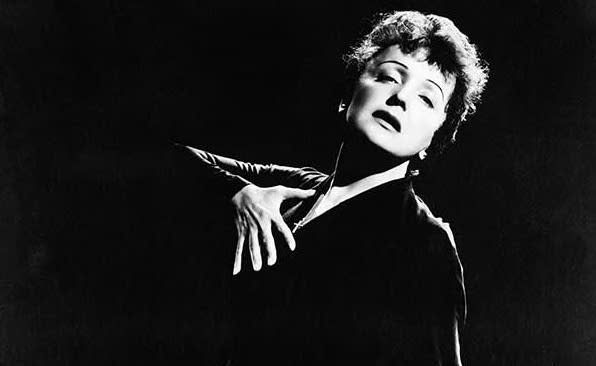Pour ce 20-ème et dernier numéro de la saison, nous allons terminer comme nous avons commencé par un succès d’Édith Piaf.
La pochette du 45T d’Édith Piaf :
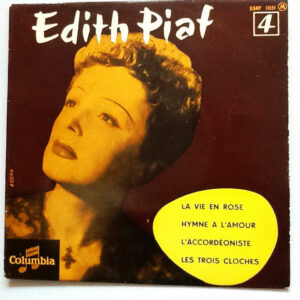
Le 78T de Marianne Michel :
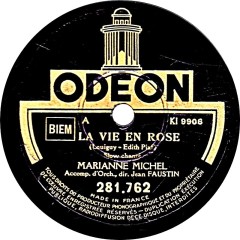
À l’époque on vendait aussi les airs à la mode sous forme de partitions (notamment pour les chanteurs de rues) :
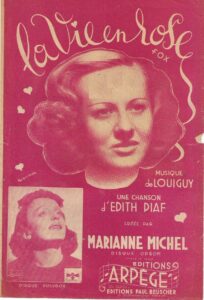
La déclaration à la SACEM Piaf/Louiguy :
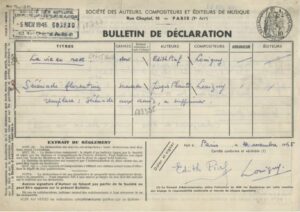
For my Friends who don’t speak French a summary in English. I hope it can help to follow what I say.
For this 20th and final épisode of the season, we will end as we started with a success by Edith Piaf
• Sample of the cover
La vie en Rose is THE French song famous world. All over the world, it is common for a restaurant owner to broadcast La vie en Rose as soon as he spots French customers.
Another example is the Olivier Dahan’s movie La môme which revealed Marion Cotillard to the whole world and generated 86 millions dollars (more than half of which in non-French-speaking countries) was released internationally under the title La vie en Rose.
The authorship of the song is a little debated. The title is deposited on SACEM’s record on November 5, 1945 with Edith Piaf, as author, and, as composer, a certain Louiguy whose real name is Louis Guglielmi. While doubts remain as to the music (one thinks that Marguerite Monnot or even Piaf herself might have participated in it), biographers agree that Piaf is indeed the author of the text. She reportedly wrote a first version called Les trucs en rose (Pink Stuff) with the lyrics « If he hugs me / I see pink stuff ». Part of the song’s phenomenal success is due to the lyrics that in the aftermath of World War II spoke directly to the hearts of those who had suffered in the war. The song’s central metaphor – seeing the world again, through rose-tinted glasses – was something that surely resonated with Piaf who had been blind for several years as a child.
But then is it really a cover?
• Sample from the original version Marianne Michel www.youtube.com/watch?v=jDQ2fDQycio
At first, Piaf was not convinced by her song and gave the scoop to her friend Marianne Michel, singer who recorded some 78 rpm at the end of the 1940’s and also the first version of La Vie en Rose in 1946. Personally, I also find that Marianne Michel’s version is closer to pre-war songs and less modern than Piaf’s. Some think that Marianne Michel would have participated in the rewriting of the lyrics of “pink stuff”. Anyway, she is the one who popularized the song on stage. Faced with this success, Piaf recorded her own version in 1947. Very quickly the success was international with, for example, Louis Armstrong’s version in 1950. Of course, Piaf herself sang half-French, half-English versions in American shows.
Today there are more than 500 covers of this title (e.g. Grace Jones, Lady Gaga).
If the expression voir la vie en rose (see the life in pink) dates from the second half of the 19th century, it is Piaf’s song that enshrines it in pop culture.
Not bad for a song the author didn’t want at first, isn’t it?
See you soon for a next season of « Ils ont repris ma chanson » and don’t forget to have fun between yours years : it helps to see « La vie en rose ».
